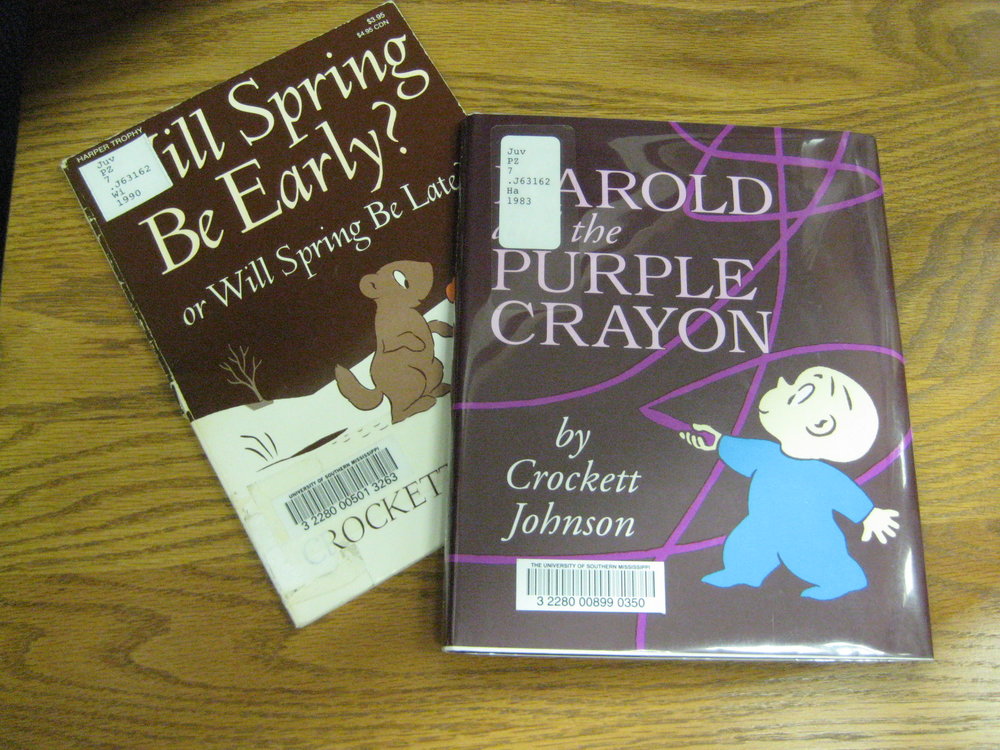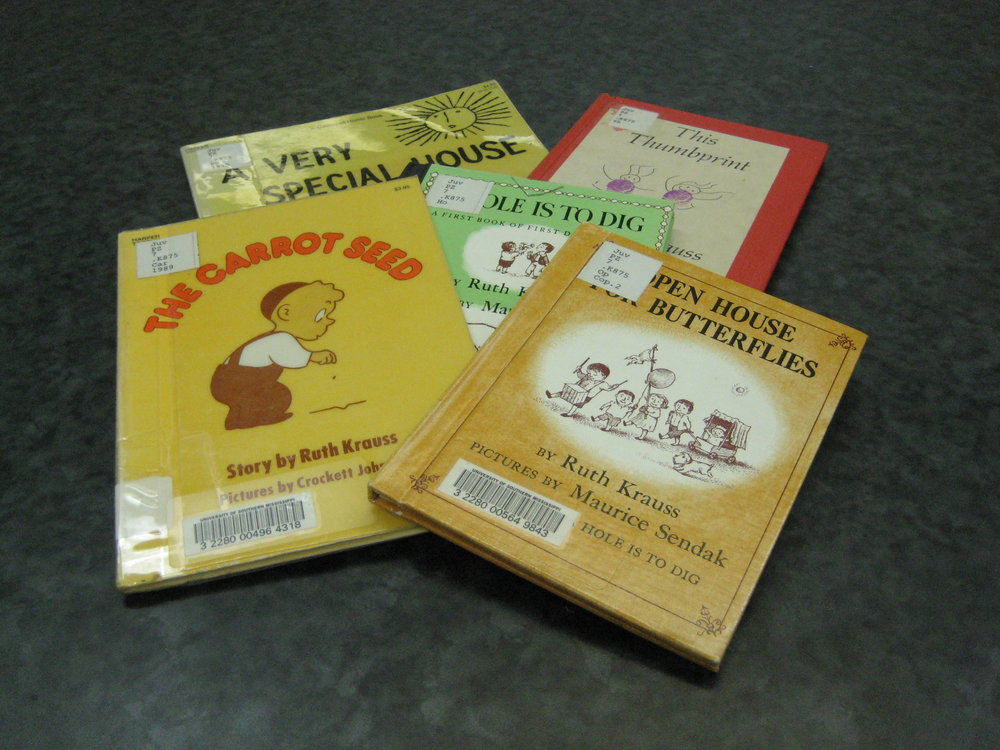
The couple illustrated the old adage of opposites attracting in both physical characteristics and personality. Crockett was tall, unruffled, and a night owl. Ruth was tiny, apprehensive, and tended to fall asleep before the party was over. In their early success, his Barnaby cartoons appealed to the intelligentsia while her The Carrot Seed, which he illustrated with a child resembling Barnaby, was a hit with the preschool crowd and made the recommended reading list for the Catholic Church.
In philosophy and life interests, they were more alike. They shared concern for the powerless and for the civil rights of all people. Their leftward political leanings and openness about these concerns in the late 40s and early 50s brought them under suspicion by the FBI and the House Un-American Activities Committee. Their skirmishes with the FBI seemed even more amusing when the surveillance was dropped to keep from embarrassing the bureau shortly before the publication of Crockett’s iconic Harold and the Purple Crayon.
Of real reader interest are some of the people who were part of their lives, names recognizable from their literary or political history. They mentored Maurice Sendak early in his life at the beginning of his career. Ruth coached him on illustrating her book – sometimes getting into arguments that Crockett had to referee. Then there was young Ronny Howard, before he was Opie, starring as Crockett’s Barnaby in Ronald Reagan’s General Electric Theater. Any page turn may bring the reader to an “I know who that is!” moment.
Of interest to today’s children’s writers are the differences in the way Ruth and Crockett worked with editors and illustrators. They had an ongoing ambivalent relationship with editor Ursula Nordstrom, and Ruth regularly gave instructions to her illustrators and sometimes had them do their work over. She
Since Philip Nel did his research well, the book is quite scholarly. However, the reader finds Crockett Johnson and Ruth Krauss to be real people likely to be good dinner companions. The reader finds irony in Crockett’s fascination with intricate artistic geometric forms balanced with the simplicity of Harold’s crayon. And Ruth provides a great deal of fun along with a cure for aging – just backdate your birth by ten years. [She advises ten rather than another number because it’s easier to remember.] I’m not kidding when I add the adjectives “surprising” and “satisfying” to “scholarly” in describing the book. I'm just sorry I couldn’t have that dinner with them.